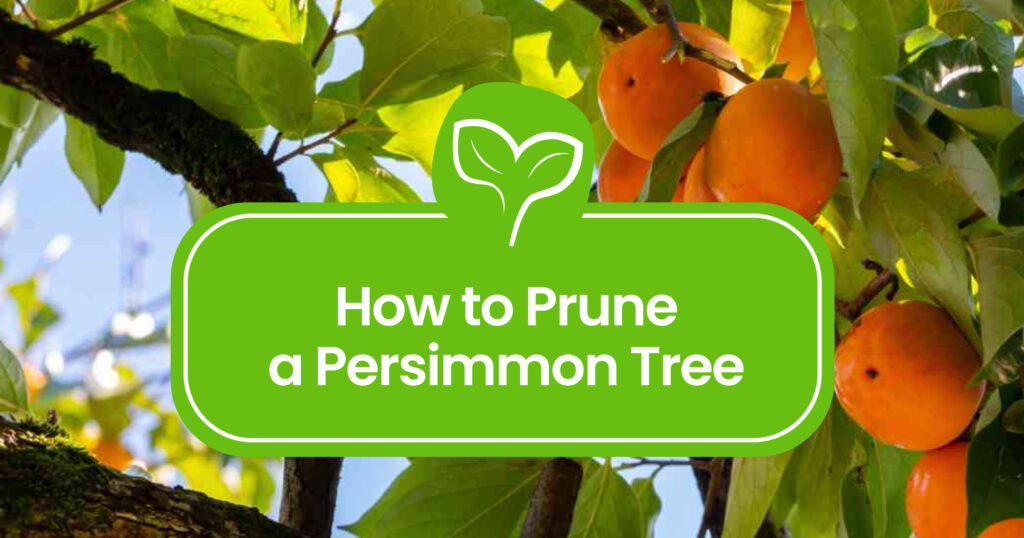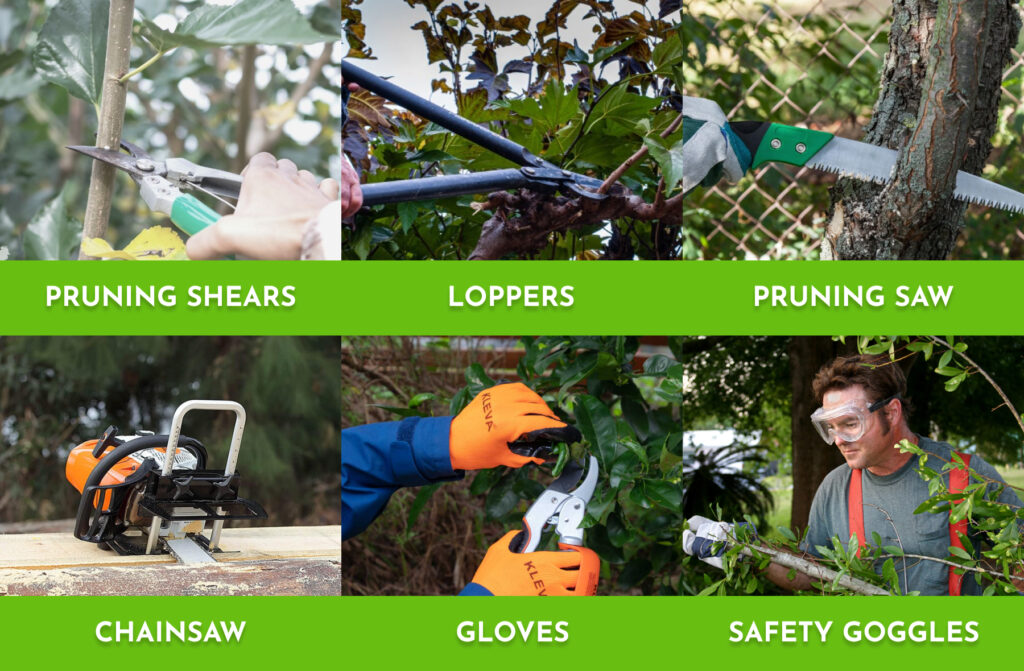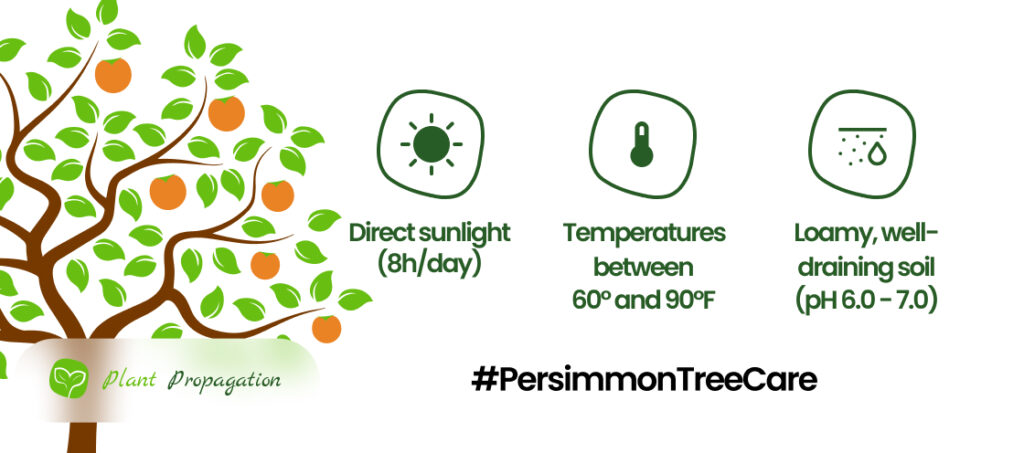
Ready for a deep dive into caring for your persimmon tree? This article’s all about pruning—what it is and why it’s super important for your tree’s growth and making those yummy fruits.
We’ll cover everything from when to prune and what tools you’ll need to the step-by-step how-to for young and older trees. By the end, you’ll know exactly why pruning isn’t just a task but a cool way to help your persimmon tree thrive in your garden. So, let’s learn how to prune a persimmon tree the right way!
Why Should You Prune Persimmon Trees
Pruning isn’t just a chore for your persimmon tree; it’s the secret to unlocking its full potential. Beyond yielding those sweet, succulent fruits, persimmon trees are nature’s artistry, transforming into stunning focal points in any landscape.
While persimmons might manage some fruit if left untamed, the real magic happens with mindful pruning. By trimming strategically, you coax your tree to flourish, ensuring a beautiful form and maximizing its fruit-bearing capacity.
Long story short, you want to prune your persimmon tree because:
- it helps your tree to focus its growth on healthy branches
- it is great for Pests and Disease Control
- it helps your tree to increase fruit yield
When to Prune Persimmon Trees
For persimmon trees, late winter to early spring is prime time for pruning. When the tree’s dormant, grab your shears. Your tree is a lot less susceptible to pests & diseases (such as leaf spots caused by Pseudocercospora diospyricola). Avoid pruning during summer to prevent stressing your tree out.
The only exception to this is if you have to get rid of diseased or dead branches on your tree because you can do that in moderation during summer or fall.
The Tools You’ll Need
You won’t need a toolbox as vast as a hardware store. As far as the pruning itself goes, you need to get your hands on some sharp pruning shears, loppers for thicker branches, and a trusty pruning saw. A Chainsaw is pretty much optional, but might come in handy.
As far as safety measures go, Gloves and safety glasses are a must for a safe snipping session.

How to Prune a Persimmon Tree
Pruning Young Persimmon Trees (1-5 years old)
When buying a container-grown sapling, it typically arrives pruned and ready for planting. However, ongoing care is very important in the first years to create a strong base.
During the first five years, you want to prune for a balanced structure with branches evenly spaced around the trunk. Aim for a symmetrical, slightly oblong shape, ensuring approximately five well-spaced branches emerging around four feet from the ground, each about a foot apart.
This careful curation of branch development in the tree’s formative years lays the groundwork for robust health and optimal fruit production in the future.
- Removing Dead and Diseased branches: Always start by removing any broken, diseased or dead branches. Cut these branches back as far as possible to the trunk.
- Shaping Up: Identify the main branches and prune to shape the tree, encouraging outward growth.
- Remove fruits: For those first four years, it’s best to pluck off any fruit. This helps your tree channel all its energy into growing strong, healthy branches.
Pruning Older Persimmon Trees (over 5 years old)
With older Persimmont trees, the main task is to keep it free of diseased or dead branches. As mentioned before, you can cut these off in summer as well. If you see any signs of hindered growth or fruit yield, that is where Rejuvenation pruning comes into the picture.
- Rejuvenate the Tree: Trim out crossing, old branches and suckers to boost air circulation.
- Trim the Tops: Cut back tall branches to maintain a manageable height.
- Open Up the Canopy: Remove dense growth to let sunlight reach every nook.
- Preserve Fruiting Wood: These are the parts of the tree that you do not want to prune during the Winter session if you want a good harvest next year.
Don’t go cutting more than a third of those healthy branches—it’s pretty important!
Aftercare
After pruning, give your tree a treat with organic fertilizer. Mulch around the base to keep the soil happy.
Monitor your tree for signs of stress or disease. Keep an eye on growth patterns for any adjustments needed.

To Sum it Up
In conclusion, pruning your persimmon tree is vital for three key reasons:
- Healthy Growth Focus: Pruning directs the tree’s energy towards healthy branches, fostering robust growth.
- Pests and Disease Control: Regular pruning aids in pest and disease management, ensuring a healthier tree.
- Enhanced Fruit Yield: Strategic pruning not only maintains tree health but also maximizes fruit yield, providing a bountiful harvest.
By timing pruning sessions during late winter or early spring, using the right tools, and following meticulous techniques for young and older trees, you pave the way for a flourishing persimmon tree—a visual delight in your garden yielding delicious rewards.
Frequently Asked Questions
When is the best time to prune a persimmon tree?
The best time to prune a Persimmon Tree is winter or very early spring. The tree is still dormant and less susceptible to pests & diseases.
Can pruning harm a persimmon tree?
Pruning in the growing season or over-pruning can seriously hurt your Persimmon tree. Remember to prune mainly in the dormant season (late winter or early spring), and to prune only branches that are either cross-growing, dead, or diseased. Pruning too much of the healthy canopy can hinder your tree’s health & growth.
Can I prune a Persimmon tree in the summer?
Even though you should focus your pruning in the dormant season, you can remove dead or diseased branches in the summer as well. Just make sure you sanitize your loppers and pruning shears before cutting into the tree.
How often do I need to prune my Persimmon tree?
To keep your Persimmon tree healthy, prune dead wood and diseased branches once a year in the dormant season (Winter or early Spring).

